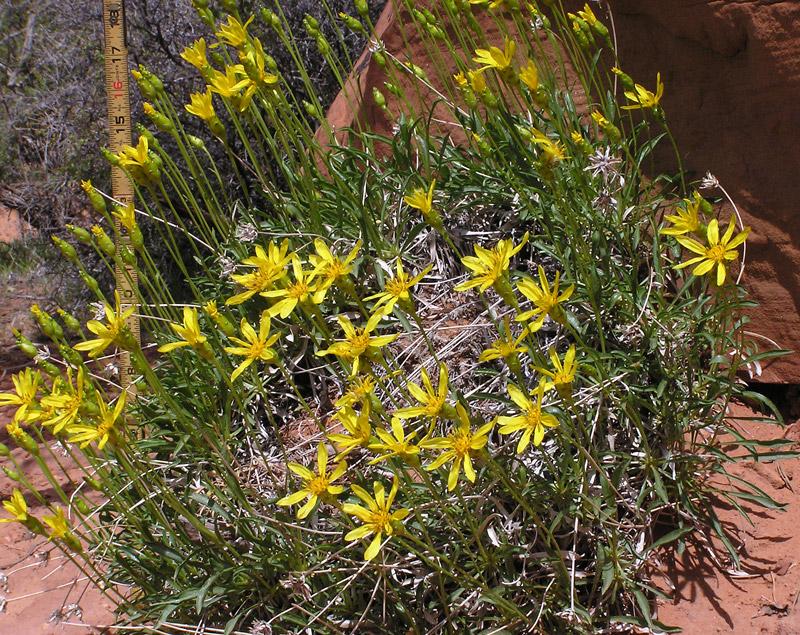Stenotus
|
Family: Asteraceae |
Perennials, 2-30(-60) cm (mat-forming or cespitose [pulvinate]; branched caudices, taproots ± well-developed). Stems erect (usually white, proximally often clothed with marcescent leaves), simple, glabrous or scabrous, villous, or lanate, eglandular, viscid, or stipitate-glandular. Leaves basal or cauline; alternate; petiolate; blades (whitish proximally, green or grayish distally) 1- or 3-nerved (nerves raised abaxially or not), linear to broadly oblanceolate (rigid or pliable), margins entire, sometimes ciliate, eglandular [glandular], faces glabrous, scabrous, or villous to lanate, viscid or stipitate-glandular. Heads radiate [discoid], usually borne singly, sometimes (2-4) in corymbiform arrays. Involucres campanulate to hemispheric, ([6-]9-28 ×) [5-]6-15 mm . Phyllaries 10-37(-64) in 2-4 series, 1- or 3-nerved (sometimes keeled proximally), lanceolate or oblong to broadly oblanceolate, unequal to equal, indurate proximally, chartaceous or herbaceous distally, margins scarious, entire or fimbriate (apices acute to obtuse or rounded), abaxial faces sometimes villous, viscid, and/or stipitate-glandular. Receptacles convex, pitted, epaleate. Ray florets [0] 5-17, pistillate, fertile; corollas yellow. Disc florets 14-45, bisexual, fertile; corollas yellow, tubes shorter than narrowly funnelform to vase-shaped, or ± ampliate throats, lobes 5, erect, triangular; style-branch appendages subulate to lanceolate. Cypselae ± prismatic to oblanceoloid or linear, often flattened, 6-12-nerved, faces usually sericeous, sometimes glabrous; pappi persistent, of 30-75, whitish, fine, barbellate, apically attenuate bristles in 1 series (spreading at maturity). x = 9. |

